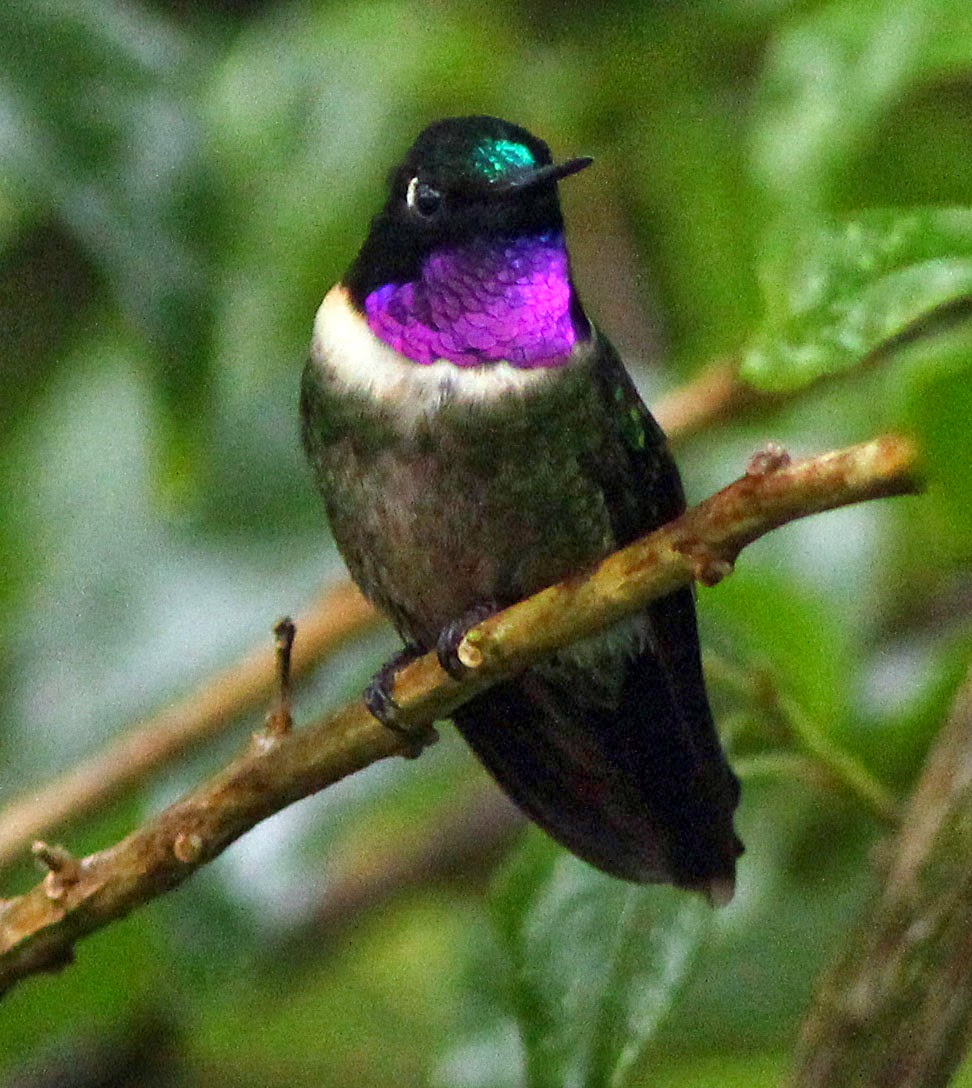Our main base for the Northern Peru tour is the five-year-old Owlet Lodge at the pass long known to ornithologists at Abra Patricia. It’s owned by ECOAN, a non-profit organization for which we’re very grateful, as they purchased the surrounding large tract of cloud forest, protect it from clearing and hunting, and make it available for birders.
The
hummingbird feeders here provide endless hours of entertainment and
photographic opportunities. It’s hard to justify just sitting at feeders
though, when you know that there are dozens of exciting cloud forest birds in
mixed flocks and in the understory along the trails. But the abundant rain we
had on this tour provided the perfect excuse.
Chestnut-breasted
Coronet is the most abundant and aggressive species here. They have a
distinctive way of holding their wings up for a brief moment upon perching.
The Collared
Inca is larger than the coronets, but was quite shy and didn’t seem to like all
the commotion.
The
interesting Bronzy Inca (few hummers are so drab) was also not as aggressive as
the coronets, but they managed to hold their own.
The
Long-tailed Sylph is one of my favorite hummingbirds of all. They came and went
as they pleased and weren’t bothered much by the more aggressive birds,
preferring to chase each other.
We saw
Speckled Hummingbird only a few times, when it would perch between the feeders
and waited for a gap in the buzzing activity. It looks vaguely like a hermit
but is not related to them.
This Amethyst-throated
Sunangel demonstrates how the feathers of the gorget and forecrown are actually
black. Only when the light is refracted through the external structure of the
feathers at just the right angle do the fabulous colors show.
















Lots of great hummers here! Nice captures!
ReplyDelete